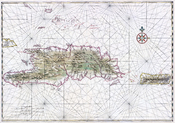Merengue History.
Merengue is a ballroom dance of Haitian and Dominican origin in which one foot is dragged on every step. In this essay I will tell you about the origins, the choreography, and about the rejection and acceptance of the dance.
The origin of the dance was lost throughout time but it is still discussed between many people. They think it may have been possible that a man named Alfonseca created the dance or even that it was made as a Dominican melody after their victory in the Talanquera battle. Among the different ideas they think that it is true that Merengue is from Cuban music called UPA. It came to Santo Domingo in about the middle of the 19th century from Puerto Rico. Although there aren't many proven facts to support any if these origins.
Now that you know about where it may have originated you may be wondering how do you do this dance? Well, I will tell you.
Men and women hold each other in a certain position and step to their side (which is known as Paso De La Emphasized). The couple has the option to turn clockwise or counterclockwise. This is known as Ballroom Merengue, otherwise known as Merengue De Salon. In this type the dancers never separate from each other. There is another form called Figure Merengue (Merengue de Figura). In this type the dancers actually do there turns by themselves, but they never let go of the hand of their partner. Although in current time traditional Merengue is only found in some rural areas. The dance has changed quite a bit. The walk is no longer there, the beats have changed from 8-12 to what is now 32-48 beats, and other changes.
The dance Merengue was quite popular among certain people,


